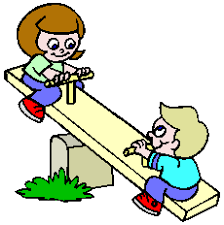Quote:
Originally Posted by Piotrsko

Hackaday had a decent explanation on how it worked: the prop blades are crosswind to the airflow so they work like sails thus enabling faster than wind. Roncz did design an airfoil that worked thusly for the Americas cup.
|
A sail has to be angled in between the direction of the wind and the direction of the boat to be able to generate a forward force.

Likewise, the blades of the propeller have to be in between the direction of the rotation (e.g. at a square angle to the direction of the car and wind) and an angle that makes them push the wind back just as fast as the car is moving forward.
With the blades flat the prop works like a sail and the wheels will make the propeller spin, as the blades will not meet much resistance; but it will of course never go as fast as the wind.
If the propeller is geared to push back at wind speed nothing happens.
If you push the car forward in a calm the blades would not move the air, neither would wind be able to move the car. The force needed to turn the propeller against the wind is equal to the force moving the car forward, canceling each other out.
Just like the sail on a sail boat the best effect is in between; a slighter angle or a lower gearing.
As the propeller turns against the wind it is able to still endure pressure from the wind, even if that does blow no faster than the car is moving already.
It needs to turn slow enough to move the wind back slower than the car, which means in the direction of the wind respective to the ground, but of course slower than the wind.
It would take almost no power to spin the propeller when flat, and just as much as it receives when it is geared to push the air back as fast as the car moves, but somewhere in between if the gearing is in between.
Which means it will spin slowly against the wind when the car rolls with the wind, and it requires less power to spin the propeller slowly against the wind than the wheels generate by rolling forward faster than that.

There are two forces working against each other and that they operate at a different scale.
Just like a seesaw where two kids of the same weight are in imbalance because one of them (propeller gril) is sitting closer to the pivot point than the other (wheely boy). Wheely boy covers a bigger distance when the seesaw flips, so he gets pulled down by gravity while the other moves a smaller distance up.
__________________
2011 Honda Insight + HID, LEDs, tiny PV panel, extra brake pad return springs, neutral wheel alignment, 44/42 PSI (air), PHEV light (inop), tightened wheel nut.


lifetime FE over 0.2 Gigameter or 0.13 Megamile.

For confirmation go to people just like you.
For education go to people unlike yourself.